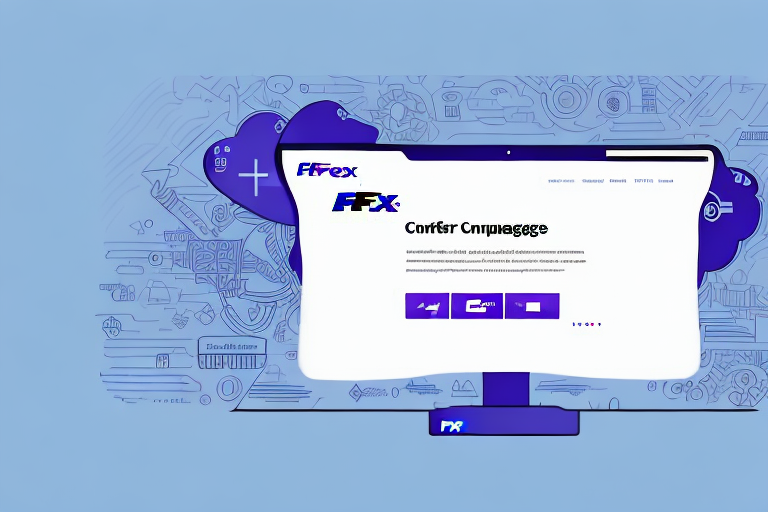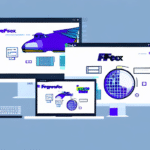How to Update FedEx Ship Manager: A Comprehensive Guide
Ensuring that your FedEx Ship Manager software is up-to-date is vital for maintaining optimal performance, enhancing security, and leveraging the latest features. Whether you're an individual, a small business, or a large organization, keeping your shipping software current can streamline your operations and protect your data.
Overview of FedEx Ship Manager
FedEx Ship Manager is a robust shipping solution designed to simplify the process of preparing shipping labels, tracking packages, and managing various shipping tasks. Available in both desktop and web-based versions, it caters to a wide range of users, from individual shippers to large enterprises.
- Desktop Version: Offers advanced features and offline capabilities, suitable for businesses with high shipping volumes.
- Web-Based Version: Accessible from anywhere with an internet connection, ideal for users who require flexibility.
With the ability to handle multiple shipments simultaneously, import shipment data from spreadsheets, and customize shipping labels with company logos and special instructions, FedEx Ship Manager is designed to enhance efficiency and accuracy in your shipping processes.
Importance of Updating FedEx Ship Manager
Regularly updating FedEx Ship Manager is essential for several reasons:
- Security Enhancements: Updates often include patches for known vulnerabilities, protecting your system from potential cyber threats.
- Performance Improvements: New updates can optimize software performance, reducing glitches and improving user experience.
- New Features: Stay ahead with the latest tools and functionalities that can further streamline your shipping operations.
- Compatibility: Ensures seamless integration with other software and systems you may be using.
According to a Cisco report, unpatched software vulnerabilities are a leading cause of security breaches, highlighting the critical need for regular updates.
Preparing for the Update
Before embarking on the update process, it's important to take the following steps to ensure a smooth transition:
- Check System Requirements: Verify that your device meets the minimum system requirements for the latest version. Visit the FedEx Ship Manager system requirements page for detailed information.
- Ensure Stable Internet Connection: A reliable connection is crucial for downloading updates without interruptions.
- Backup Important Data: Protect your shipping data by creating backups to prevent loss during the update process.
- Close Running Applications: Shut down other programs to avoid conflicts and ensure a smooth installation.
- Review Update Instructions: Familiarize yourself with the update steps provided by FedEx to minimize errors.
Step-by-Step Update Process
Step 1: Downloading the Latest Version
Begin by visiting the FedEx Ship Manager download page. Click on the “Download FedEx Ship Manager” button to obtain the latest version. Ensure that you select the correct version (desktop or web-based) that matches your previous installation.
Tip: Verify the download source to avoid counterfeit or malicious software.
Step 2: Uninstalling the Existing Version
Before installing the new version, it's essential to remove the old software to prevent conflicts:
- Navigate to the Control Panel on your computer.
- Select Programs and Features (or Add or Remove Programs on older Windows versions).
- Find FedEx Ship Manager in the list of installed programs.
- Click Uninstall and follow the on-screen prompts to complete the removal.
Remember that uninstalling the software will erase all saved preferences and settings. Document any custom configurations you wish to retain for reapplication post-installation.
Step 3: Installing the Latest Version
With the old version removed, proceed to install the updated software:
- Locate the downloaded installation file and double-click to launch the installer.
- Follow the installation wizard, accepting the terms and selecting your preferred installation settings.
- Allow the installation to complete, and reboot your computer if prompted.
For detailed installation guidance, refer to the FedEx Ship Manager Support page.
Step 4: Configuring Your New Settings
After installation, set up your FedEx Ship Manager with your specific preferences:
- User Profiles: Add or update user profiles to manage permissions and access.
- Printer Preferences: Configure your printer settings to ensure labels print correctly.
- Payment Options: Update your billing information and payment methods.
- Shipping Addresses: Verify and update your address book to prevent shipping errors.
Utilize the FedEx Ship Manager User Guide for comprehensive instructions on configuring settings.
Troubleshooting Common Update Issues
Encountering issues during the update process can be frustrating. Here are common problems and their solutions:
- Installation Errors: Ensure your system meets all requirements and that you're using the correct installation file.
- Slow Download Speeds: Switch to a more stable internet connection or pause other high-bandwidth activities.
- Software Crashes: Restart your computer and attempt the installation again. If issues persist, contact FedEx Customer Support.
- Missing Features: Verify that you have installed the correct version (desktop vs. web-based) and that all updates have been applied.
If problems continue, consider reaching out to IT professionals or FedEx support for specialized assistance.
Benefits of Updating to the Latest Version
Updating FedEx Ship Manager brings numerous advantages that can significantly enhance your shipping operations:
- Enhanced Security: Protects against the latest threats with up-to-date security measures.
- Improved Performance: Optimizes software speed and responsiveness, reducing delays.
- New Features: Access the latest tools and functionalities that can streamline your workflow.
- Regulatory Compliance: Ensures adherence to current shipping regulations and standards.
- Integration Capabilities: Facilitates seamless integration with other business systems and software.
According to a study by Gartner, regular software updates are crucial for maintaining operational efficiency and security in businesses.
Frequently Asked Questions
- How often should I update FedEx Ship Manager?
It's recommended to check for updates monthly or whenever FedEx releases a new version to ensure you're benefiting from the latest features and security enhancements.
- Will updating FedEx Ship Manager delete my shipping data?
Updating the software should not delete your data. However, it's always best to back up your information before proceeding with updates.
- Can I skip versions when updating?
It's advisable to follow the sequential update path to prevent compatibility issues. Check FedEx's update guidelines for specific instructions.
Conclusion
Keeping FedEx Ship Manager updated is a fundamental practice for ensuring the efficiency, security, and reliability of your shipping operations. By following this comprehensive guide, you can navigate the update process with confidence, minimizing disruptions and maximizing the benefits of the latest software enhancements.
Remember, a proactive approach to software maintenance not only safeguards your business against potential threats but also empowers you with the tools needed to stay competitive in the ever-evolving logistics landscape.






















